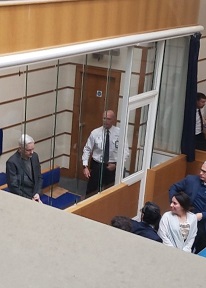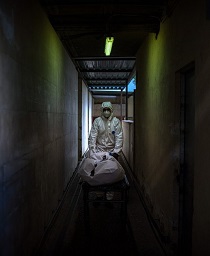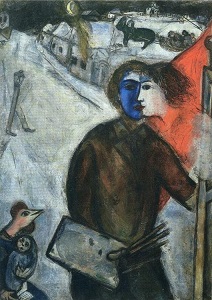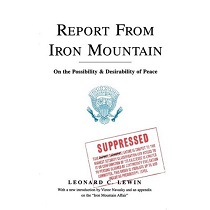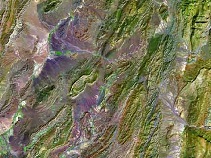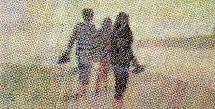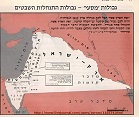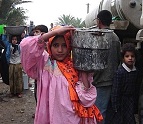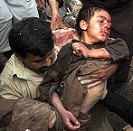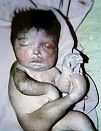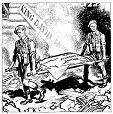Spanish Torture Investigation into Gitmo to Continue
Andy Worthington
Andy Worthington's Blog

On Friday, the Spanish National Court gave hope to those seeking to hold accountable the Bush administration officials and lawyers who authorized torture by agreeing to continue investigating allegations made by a Moroccan-born Spanish resident, Lahcen Ikassrien, that he was tortured at Guantánamo, where he was held from 2002 to 2005.
Spanish courts are empowered to hear certain types of international cases, but following a limitation placed on the country's universal jurisdiction laws in 2009 (very possibly with pressure from the United States), the cases in question must have a “relevant connection” to Spain. The National Court concluded that it was competent to take the case because Ikassrien had been a Spanish resident for 13 years prior to his capture, and it will be overseen by Judge Pablo Ruz, who, in June 2010, replaced the colorful and controversial Judge Baltasar Garzón, who initiated the proceedings, after Garzón fell foul of political opponents in Spain.
This is exceptionally good news, as the Center for Constitutional Rights, which has been involved in this case (and in another ongoing case, aimed at the six senior Bush administration lawyers who authorized the U.S. torture program), explained in a press release:
This is a monumental decision that will enable a Spanish judge to continue a case on the “authorized and systematic plan of torture and ill treatment” by U.S. officials at Guantánamo. Geoffrey Miller, the former commanding officer at Guantánamo, has already been implicated, and the case will surely move up the chain of command. Since the U.S. government has not only failed to investigate the illegal actions of its own officials and, according to diplomatic cables released by WikiLeaks, also sought to interfere in the Spanish judicial process and stop the case from proceeding, this will be the first real investigation of the U.S. torture program. This is a victory for accountability and a blow against impunity. The Center for Constitutional Rights applauds the Spanish courts for not bowing to political pressure and for undertaking what may be the most important investigation in decades.
CCR's reference to WikiLeaks is important, as it was revealed in a U.S. diplomatic cable released by WikiLeaks on December 1 last year that, in April 2009 Obama administration officials, with the help of a seemingly unlikely ally — Sen. Mel Martinez (R–Fla.), who had recently been chairman of the Republican Party — met with their Spanish counterparts in an attempt to persuade them to call off the investigation into “the Bush Six,” because “the prosecutions would not be understood or accepted in the U.S. and would have an enormous impact on the bilateral relationship” between Spain and the United States.
The day after the meeting, as I explained in an article in December:
Attorney General Conde-Pumpido “publicly stated that prosecutors will ‘undoubtedly’ not support [the] criminal complaint,” adding that he would “not support the criminal complaint because it is ‘fraudulent,’ and has been filed as a political statement to attack past [U.S. government] policies.” He added that, “if there is evidence of criminal activity by [U.S. government] officials, then a case should be filed in the United States.” In the cable, officials at the U.S. embassy in Madrid congratulated themselves for their successful involvement in the case, noting that “Conde Pumpido’s public announcement follows outreach to [Spanish government] officials to raise [the U.S. government's] deep concerns on the implications of this case.”
This was not the end of the story, as Judge Garzón pressed ahead with the investigation in September 2009, and in April 2010 CCR became involved, seeking “to assist the court by providing analysis of various U.S. government reports, memoranda and investigations, providing factual information regarding the treatment of specific persons detained at Guantánamo and other locations, as appropriate, and other aspects of the detention and interrogation program. CCR further intends to assist in gathering and analyzing information about specific persons believed to have ordered, directed, conspired, aided and abetted, or otherwise participated directly, indirectly or through command responsibility in the torture and other serious mistreatment of persons detained at U.S.-run detention facilities.”
As noted above, Judge Ruz then took over the case in June, and on January 7 this year CCR and the Berlin-based European Center for Constitutional and Human Rights (ECCHR), submitted a dossier to the court (PDF), detailing the involvement in torture of Maj. Gen. Geofffrey Miller, the commander of Guantánamo during part of the time that Lahcen Ikassrien was held, “which collects and analyzes the evidence demonstrating his role in the torture of detainees at Guantánamo and in Iraq,” where he was subsequently sent to “Gitmo-ize” operations at Abu Ghraib, leading to the worldwide scandal that erupted in April 2004, when photos of the abuse of prisoners first brought the horrors of the Bush administration's widespread use of torture in the “war on terror” into the open.
Based on the information in the dossier, CCR and ECCHR believe that there is sufficient information for the court to request that a subpoena be issued for Miller to testify before Judge Ruz, and it is this that led CCR to express the hope, in its press release, that as a result “the case will surely move up the chain of command.”
I recommend those interested in this case to read the dossier about Miller, but to provide some background to the kind of information that can be expected to emerge in connection with Ikassrien's detention, I'm posting highlights of his story, as told to El País in December 2006, and translated into English for Cageprisoners in 2007, plus additional information that I included in an article in November 2007.
Lahcen Ikassrien: Torture in Kandahar and Guantánamo
When Lahcen Ikassrien was flown from Guantánamo to Spain on July 18, 2005, after three years and eight months in U.S. custody, he was not a free man, but had been extradited at the request of anti-terror judge Baltasar Garzón, who claimed that he was linked to the Syrian-born Spaniard Imad Yarkas, serving 12 years in prison for belonging to al-Qaeda.
In June 2006, however, the Spanish Supreme Court threw out Yarkas’ conviction for conspiracy to commit murder in the 9/11 attacks, and, with the case against Ikassrien demolished, he was finally freed on October 11, 2006. The Associated Press reported that the court concluded, “It has not been proved that the accused, Lahcen Ikassrien, was part of a terrorist organization of Islamic-fundamentalist nature, and more specifically, the al-Qaeda network created by Bin Laden,” adding that wire-tapped conversations between Ikassrien and another suspected al-Qaeda member in Spain had also been considered invalid.
A former gardener, cook, and construction worker, who had spent three years in prison for dealing hashish, Ikassrien's journey to Guantánamo began when he traveled to Afghanistan after separating from his Moroccan wife. According to the El País reporter he spoke to after he was finally cleared of all terrorism charges, he “seemed fascinated by the Taliban government,” and explained, “I wanted to know how it was to live there, if what was said about the Taliban was the truth. For me, Taliban was synonymous with Muslim, good Muslim.”
Struggling to reach Afghanistan, Ikassrien was expelled from Istanbul and spent two months in Turkey before managing to catch a bus through Iran to the western Afghan city of Herat. There, he said, the Taliban “interrogated me in a police station for six hours. They wanted to know everything. Where I went and what I wanted to do. These people did not trust anyone. I told them that I came from Europe to live like the true Muslims. They sent me to Kunduz, near Mazar-e-Sharif, and there I bought a taxi and a butcher shop that was run for me by two Afghans. I could not run it because I understood neither Pashto nor Arabic.”
Denying allegations that he trained in an al-Qaeda camp and fought alongside the Taliban, he explained that he was captured by men serving under the Northern Alliance warlord General Rashid Dostum, after fleeing Kunduz in a convoy of trucks, and taken to Qala-i-Janghi, an ancient fort, with hundreds of other captured men. Most of these men died after some staged an uprising, which was put down with savage force, and the survivors, like Ikassrien, huddled underground in a basement, as the Northern Alliance and their U.S. allies bombed them, attempted to set them on fire, and finally flooded the basement. Ikassrien, who was wounded in the arm and hand by shrapnel from a U.S. bomb, said, “My group was in an underground trench and they were throwing gasoline at us. Many died burnt. Then Dostum’s men flooded us with water and it went up to my neck. It was horrible. I left alive by a miracle.”
From Qala-i-Janghi he was taken, via Dostum’s vile and overcrowded prison at Sheberghan, where, he said, he was questioned at gunpoint, told that he had been sold for $75,000 and described as an “important terrorist,” to the U.S. prison at Kandahar airport, where an American soldier fastened a plastic bracelet on his wrist, which stated, simply, that he was “Animal Number 64.” Treated with a brutality that is familiar from other prisoners' reports — “They burned my legs with cigarettes, they hit me over the head with gun butts, and repeated time and time again that a person like me did not have the right to live.” He was then transferred to Guantánamo.
Recalling his arrival at Guantánamo, he noted that he was weighed, and that “the scale marked 55 kilos, 23 less than when I was seized in Afghanistan.” He added, “My arm had gangrene, and they gave me a paper to sign to authorize an amputation. A volunteer of the Red Cross advised me not to do it, as he thought that it was possible to save my arm, and thanks to him I kept it.”
The hospital in Guantánamo was “a tent,” and he remained there for about three months, seated in a folding chair and tied at his feet and hands, in the company of 20 other prisoners, most of them Arabs, Afghans, and Pakistanis. “The soldiers entered the infirmary with dogs that barked wildly at us,” he said, adding, “We went on a hunger strike so that they would not enter anymore.”
In May 2002, Ikassrien received his first visit from a Spanish delegation, which included a diplomat from the Spanish embassy in Washington, D.C., and Spanish police officers. He explained that, after the visit, the Americans began to treat him worse, and torture and threats followed one another. “They said that, according to the information provided by the Spaniards, I was an international drug trafficker and I financed jihad inside and outside Spain.”
He explained that the interrogations in Camp Delta, which opened in May 2002 to replace the animal cages of Camp X-Ray, were held in a special room, which reminded him of his experience in Kandahar. There, he said, interrogators showed him hundreds of photographs of alleged jihadists and spoke of tens of groups close to al-Qaeda. As he also explained, referring, in all probability, to the regime introduced by Maj. Gen. Geoffrey Miller later in 2002:
They came to the cell, they used a spray that made you cry, you turned around, went down on your knees with your hands intertwined over your head, and they tied your hands and feet with chains. They led you to a room with plastic walls, and there they left you alone for hours. Hours of anguish waiting for them to arrive. They put ventilators so that you were freezing cold.
The Spanish police officers visited again in early 2003. Again, there were several agents led by the same commissioner and a representative from the embassy. Ikassrien was played tapes of a conversation about jihad in which he was supposedly one of the speakers, but he denied that the voice was his. “They offered to make me a protected witness,” he explained. “They said that they would give me money, work and a house if I collaborated. They offered to let me speak to my mother the following morning. I said yes to this, as I had no news from her for three years.”
The next day a U.S. captain and an interpreter prepared to let him call his mother in Alhucemas in front of Spanish police officers. “You can speak for two minutes,” they said to him. “Tell her that you are alive and well, but do not say where you are.” Ikassrien said, “I told them that if I could not tell my mother where I was, I would not accept the call, and they went away angry. Soon the Americans returned and gave me a beating. They undressed me and threw me into a container where there were rats. I remained alone for three days, naked, without food or water. Like an animal. People from the Red Cross came to visit to me and asked me why I was there.”
Although the Spanish police stated in a report presented at Ikassrien's trial that they did not return to see him in Guantánamo, he was adamant that they visited him again in June or July 2003. “They came with more photos,” he said. “I told them that I was Moroccan and that they did not have the right to interrogate me. They replied that they wanted to help me.” Ikassrien added that he also told them, “Every time you come, the Americans torture me.” He also explained that he had been interrogated by Moroccan agents.
After this third Spanish visit, as Ikassrien anticipated, the Americans again subjected him to torture, in an attempt to persuade him to identify alleged terrorists in photographs. “Again I was naked for several days and without food,” he said. “An interrogator who called herself Ana came and began to show me more photos. I refused to answer. They brought black dogs with muzzles, they hooded me and the animals barked and they struck me with their legs. I only felt the shoves, I did not know if they were loose. My companions heard everything and struck with their fists on the cell walls.”
The last visit of the Spanish police took place in March 2004, and in July Ikassrien was moved to the solid-walled isolation cells of Camp Five, where a psychiatrist who looked oriental subjected him to sustained psychological mind games, and told him, “If you do not collaborate you will be here all your life.” Ikassrien added, “To eat, I got a piece of bread and a little bit of onion. It was hell. You could not hear any noise, you did not know if it was day or night.”
A year after he was moved to Camp Five, Ikassrien was taken to the infirmary, where he was given a check-up and read a document in Arabic, which stated that the U.S. government “did not have anything against him, but if they found he was linked to al-Qaeda they had the right to take him to Guantánamo again.” He added, “They wanted me to sign it, but I refused.” He was then hooded and taken to a plane that returned him to Spain on July 18, 2005, where he was imprisoned in Soto del Real and Palencia prisons for another 15 months, until he was finally freed in October 2006.
___________________________________________________________________________________________________________________________

Andy Worthington is the author of The Guantánamo Files: The Stories of the 774 Detainees in America’s Illegal Prison (published by Pluto Press, distributed by Macmillan in the US, and available from Amazon — click on the following for the US and the UK). To receive new articles in your inbox, please subscribe to my RSS feed (and I can also be found on Facebook and Twitter). Also see my definitive Guantánamo prisoner list, updated in January 2010, details about the new documentary film, “Outside the Law: Stories from Guantánamo” (co-directed by Polly Nash and Andy Worthington, and launched in October 2009), and, if you appreciate my work, feel free to make a donation.
___________________________________________________________________________________________________________________________
URL: http://www.a-w-i-p.com/index.php/2011/03/02/spanish-torture-investigation-into-gitmo

